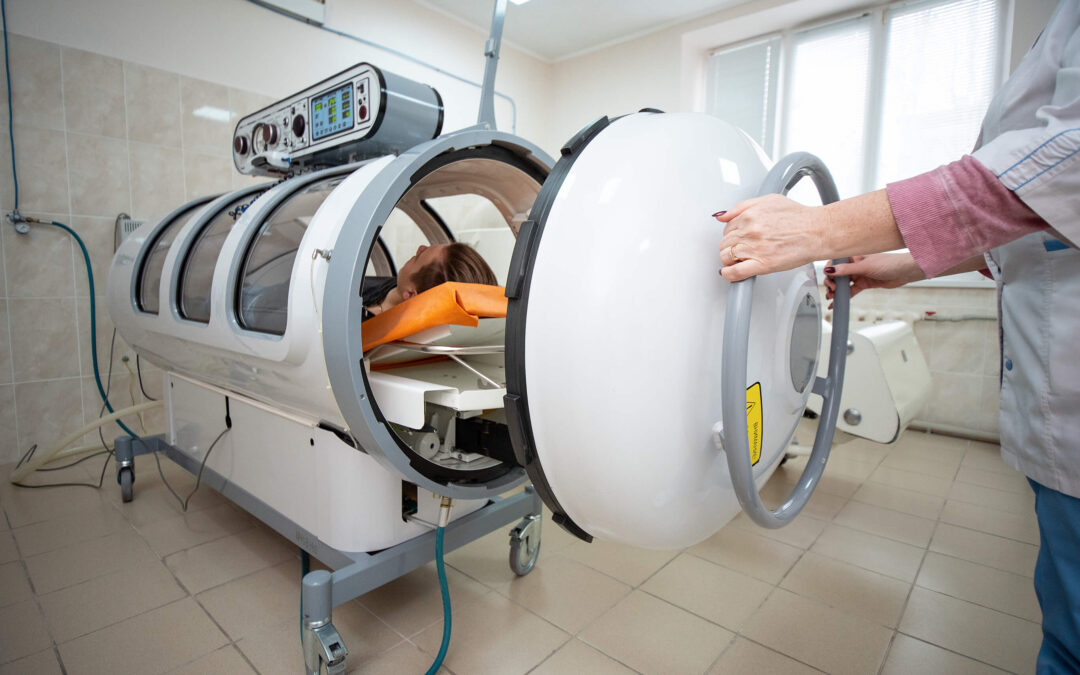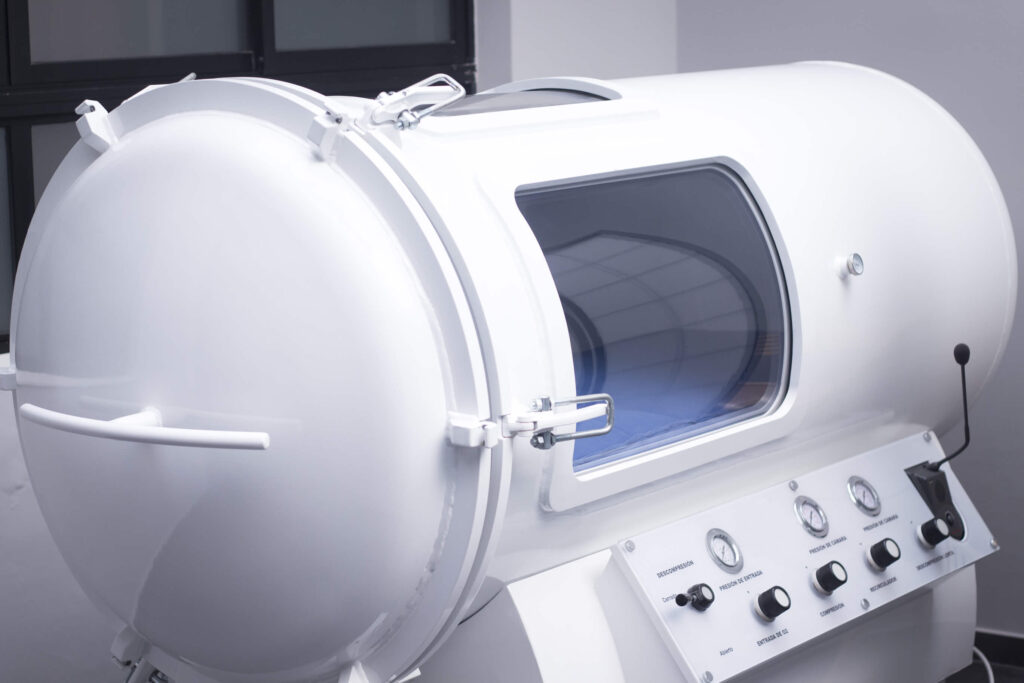Managing Chronic Fatigue Syndrome With Hyperbaric Therapy
Chronic fatigue has become increasingly popular in our modern-day society. Generally, hyperbaric oxygen helps heal the underlying cause of chronic fatigue syndrome from the inside out.
Hyperbaric oxygen therapy (HBOT), or simply hyperbaric chamber therapy, is a medical treatment commonly used to help improve the natural healing processes in the body.
In the early 1900s, the U.S. introduced the application of hyperbaric oxygen therapy, which was later used to treat symptoms of decompression sickness, a hazard of scuba diving. Nowadays, various institutions can medically prescribe and supervise HBOT.
What Is Chronic Fatigue?
Chronic fatigue syndrome (CFS) is a long-term ailment with many symptoms. Extreme tiredness is the most common symptom of chronic fatigue syndrome, and this illness can affect anyone, even children.
The primary symptom of chronic fatigue is feeling generally unwell and very tired. People might also have other symptoms, such as:
- Muscle or joint pain
- sleep difficulties
- A sore throat
- Headaches
- Flu-like symptoms
- Problems thinking, concentrating, or remembering
- Fast or irregular heartbeats
- Feeling dizzy or ill
Most people realize that overexerting tends to worsen their symptoms. The seriousness of symptoms may vary from one day to another or even within a given day. Doctors diagnose chronic fatigue syndrome based on a patient’s symptoms and by ruling out other conditions that might be causing similar symptoms, as there is no specific test for the condition.
It’s not known what brings about chronic fatigue, but there are a few theories. For instance, an infection could cause it, or some factors might make you more prone to develop the condition. These factors may include:
- Bacterial infections, e.g., pneumonia
- Viral infections, e.g., glandular fever
- A hormone imbalance
- Issues with the immune system
- Your genes
- Mental health issues, such as emotional trauma and stress
What causes chronic fatigue syndrome?
Chronic Fatigue Syndrome (CFS), or Myalgic Encephalomyelitis (ME), is complex and mysterious. While researchers have made progress, the exact cause remains unclear. CFS is likely a result of multiple factors interacting with one another.
Here are some of the leading theories about its potential causes:
- Viral Infections: Some people develop CFS after experiencing a viral illness, such as Epstein-Barr or other infections. It has led to the idea that viral infections could sometimes trigger the condition.
- Immune System Abnormalities: Evidence suggests that abnormalities in the immune system might play a role in CFS. The immune system may become dysregulated, causing persistent fatigue and other symptoms.
- Hormonal Imbalances: Some researchers believe that disruptions in hormone levels, such as those involving the hypothalamus-pituitary-adrenal (HPA) axis, could contribute to CFS. That may affect the body’s ability to manage stress and energy production.
- Genetics: Genetic factors might make specific individuals more susceptible to CFS. Studies have shown that CFS can run in families, suggesting a genetic component.
- Psychological and Environmental Factors: High stress, trauma, and environmental factors may be associated with CFS. These factors can potentially trigger or exacerbate symptoms in susceptible individuals.
- Mitochondrial Dysfunction: Some research suggests that problems with the energy-producing structures in cells, called mitochondria, could be linked to CFS. That could result in the reduced energy and stamina seen in CFS patients.
It’s important to note that CFS is a diagnosis of exclusion, meaning that doctors typically rule out other potential medical conditions with similar symptoms before diagnosing CFS. Additionally, many experts believe that CFS may have different causes in different individuals, making it a complex and heterogeneous condition.
What is hyperbaric oxygen therapy?
Patients undergoing HBOT receive medical care by breathing in pure oxygen while enclosed in a chamber with more significant than usual air pressure. More oxygen is forced into the circulation by elevated pressure, which is absorbed by the lungs and sent to damaged or oxygen-starved tissues to promote healing.
HBOT treats various conditions, including carbon monoxide poisoning and diabetic foot ulcers. Further research is necessary to determine whether HBOT may be a feasible treatment for ME/CFS, even though the evidence is promising regarding its potential utility as an intervention for fibromyalgia. It is important to note that NICE approves none of these illnesses to use HBOT as a treatment.
Why use HBOT in these conditions?
The symptoms of fibromyalgia and ME/CFS may overlap, as may the underlying disease mechanisms. One notion that has been set up is that symptoms like pain, fatigue, and cognitive impairment are caused by a reduction in the amount of oxygen delivered to tissues in the body. It is reasonable to investigate the possible benefits of HBOT in improving oxygen delivery and lessening the symptoms associated with these debilitating conditions. Examining how this intervention affects any of these diseases may provide insightful information about the others, given their similarities.
How Does Hyperbaric Oxygen Therapy (HBOT) Work?
One method of hyperbaric oxygen therapy entails a patient receiving the treatment in a tube-like chamber. The chamber allows patients to see outside since some tubes are created with clear acrylic. This transparency can eliminate some of the patient’s anxiety about feeling trapped within the tube.
During hyperbaric chamber therapy, healthcare providers ask a person to lie in a confined chamber and breathe the air within the tube while slowly increasing the pressure.
There is also another mode of treatment that involves a multi-person hyperbaric oxygen room. In this scenario, oxygen is delivered through a lightweight, transparent hood or mask over the patient’s head. A person can lie down or sit in a lounge chair— and this method has no chamber or tube.
Typically, healthcare providers prescribe treatment sessions lasting up to two hours. Moreover, the number of treatments prescribed to a patient depends on the condition being treated using this therapy.
Benefits
At Hyperbaric Chamber Therapy, their new Hyperbaric Chamber offers several advantages to their patients. The Hyperbaric Chamber is designed to help speed up recovery and lower recovery times so patients can feel like themselves soon after their surgical procedure.
Patients who include HBOT in their surgical procedure experience Lowered Pain and Swelling, Minimization Of Scars, Enhanced Collagen Production, and Accelerated Healing enabling them to return to their usual activities and life sooner.
Healthcare providers have utilized hyperbaric oxygen therapy (HBOT) to treat several medical disorders and injuries by increasing the amount of oxygen in the tissues. HBOT can be administered as a standalone treatment or as an adjunct to antibiotics to enhance its effectiveness.
Regarding chronic fatigue patients, hyperbaric oxygen reduces the seriousness of symptoms and enhances their overall quality. It may be a new treatment modality for coping with chronic fatigue.
Hyperbaric Chamber and ME/CFS
ME/CFS, a syndrome marked by crippling fatigue, post-exertional malaise, impairment of cognition, and sleep difficulties, among many other symptoms, has no known effective treatment. But may HBOT be useful? Simply put, we have yet to determine. Only two notable studies have investigated the effect of HBOT on people with ME/CFS; both studies were small-scale and produced different results.
In the first study, which took place in 2003, 29 patients got HBOT for a week before being checked on a month later. All patients met the Fukuda criteria for CFS, but they were divided into two groups: those who had the bacterial infection mycoplasma infection and those who did not. Using patient questionnaires to measure various factors, such as fatigue, pain, and physical functioning (the capacity to do activities of daily living), the researchers hoped to determine whether HBOT reduced symptoms in patients suffering from mycoplasma infection. Nevertheless, given that neither group showed significant differences in any domain after HBOT, we can conclude that, on the whole, this study did not show HBOT to be a successful treatment for ME/CFS.
In the second study, which took place in 2013, sixteen patients who met the Fukuda criteria were given HBOT for three weeks. Questionnaires were used to assess the fatigue severity scale and how it affected the patient’s quality of life. Patients reported considerable improvements in every domain after receiving HBOT. Regretfully, no follow-up was conducted to see whether these effects persisted.
Since the number of HBOT sessions required to assess its effects is still being determined, the initial study’s intervention duration probably needed to be increased to detect any changes. Overall, we cannot draw clear conclusions because both studies lacked a control or comparison group that did not get HBOT and had limited sample sizes.
The most dependable way of investigating therapies is a randomized controlled trial (RCT), which should ideally be used in the future investigation of how HBOT affects ME/CFS. RCTs, however, are typically more expensive and time-consuming than other study designs.
Hyperbaric Chamber and Fibromyalgia
There is a significant overlap in symptoms between fibromyalgia and ME/CFS, such as pain, fatigue, impaired cognition, and sleep issues. But unlike ME/CFS, where pain is a secondary symptom, fibromyalgia has pain as a central component. Regarding HBOT research, studies on fibromyalgia have been conducted far more than those on ME/CFS.
The symptoms mentioned above may be much improved by HBOT, according to an extensive review and evaluation of nine studies looking into utilizing HBOT as a treatment for fibromyalgia published in January 2023. Additionally, three studies showed a decrease in “tender points,” or fibromyalgia-specific painful areas on the body. However, the authors pointed out significant flaws in all the research, such as tiny sample numbers and lack of follow-up. There were just three randomized controlled trials (RCTs), the gold standard for evaluating the impact of therapies. A sham intervention, or “faked” intervention meant to resemble the real thing, would have helped guarantee that any benefits of the genuine intervention observed were not the result of the placebo effect in two RCTs where the control group was not given one.
Another RCT that included 64 fibromyalgia patients (after traumatic brain injury) undergoing HBOT for three months was published after this study. Significant gains were seen following the intervention in several areas, such as physical functioning, pain, and fatigue. Nonetheless, this research did not include a fictitious control group; the comparative group adhered to a prescribed medication protocol.
How Does Hyperbaric Oxygen Therapy Help in Increasing Our Energy?
Patients use hyperbaric oxygen therapy to treat chronic fatigue, promote injury healing, restore normal brain function following a concussion, and expedite recovery following surgery or other procedures.
Our cells’ mitochondria function similarly to a combustion engine in an automobile.
Like an engine requires fuel (gasoline) and oxygen for combustion, our mitochondria require food and oxygen for metabolism to produce energy.
Requirements for a healthy exhaust (waste disposal) system and adequate food and oxygen intake are critical for maintaining efficiency in our metabolism.
Our mitochondria benefit significantly from a nutritious, well-balanced diet, but we also require a reliable source of oxygen. That lies in the application of hyperbaric oxygen therapy.
The FDA has approved hyperbaric oxygen therapy, which includes breathing entirely pure oxygen within a hyperbaric chamber—a specially constructed machine.
These are either large, multi-person rooms or tube-shaped chambers that may contain one person each.
When the air inside the chamber is 100% oxygenated, the pressure can be raised to greater than usual.
Professionals with the necessary training who understand how to measure the pressure as well as oxygen levels safely should perform this procedure.
Our lungs can take in more oxygen when we breathe in this high-pressure environment, which fills our red blood cells up to the capacity of oxygen.
Our blood plasma itself has oxygen in it. The many cells in our body absorb all that oxygen as our blood flows through it.
An abrupt increase in oxygen reaches our mitochondria, causing our metabolism and energy production to rise above normal.
Then, this energy can be used for various tasks like fat burning, inflammation reduction, muscle, brain, and organ function, as well as healing.
It can even strengthen the immune system and repair damaged DNA and cells.
Regarding chronic fatigue syndrome, the oxygenation provided by hyperbaric oxygen therapy may help enhance the function of mitochondria, which can efficiently energize cells and increase energy levels.
Better attention, more productivity, and a more extraordinary ability to handle stress are all brought on by this energy boost, which may also reduce psychological variables associated with chronic fatigue syndrome.
Hyperbaric oxygen therapy promotes optimal bodily function in addition to aiding in healing.
Studies on Hyperbaric Oxygen Therapy’s Impact on Chronic Fatigue Syndrome Treatment
A person with chronic fatigue syndrome may find it challenging to meet their family, friends, and work responsibilities, among other social responsibilities.
Though thoughts on how to treat it are currently divided, there is mounting proof that Hyperbaric Oxygen Therapy may help manage this condition.
In 2013, sixteen patients diagnosed with chronic fatigue syndrome participated in a study.
Each patient received fifteen sessions of hyperbaric oxygen therapy for three weeks, five days a week.
The study’s objective was to compare the participants’ pre- and post-measurements of their level of exhaustion using the Visual Analog Fatigue Scale (VAFS), the Fatigue Severity Scale (FFS), and the Fatigue Quality of Life Score (FQLS).
All patients tolerated Hyperbaric oxygen therapy after the 15 sessions with no problems or adverse effects.
Hyperbaric oxygen therapy significantly reduced the severity of chronic fatigue syndrome, improving the quality of life for FSS, VAFS, and FQLS patients, as their scores showed notable improvement.
Get Started Today!
Hyperbaric Chamber Therapy in Las Vegas has an experienced clinical team that’s always available to answer any questions regarding Hyperbaric Oxygen Therapy and its facilities.
They believe that their clients deserve the best. They aim to achieve patient success via innovative, personalized, and compassionate care that improves a patient’s healing potential.
Call their office today at (702) 476-4356 to Get Started with HBOT. Learn how it could help you accelerate healing and get optimal health!


